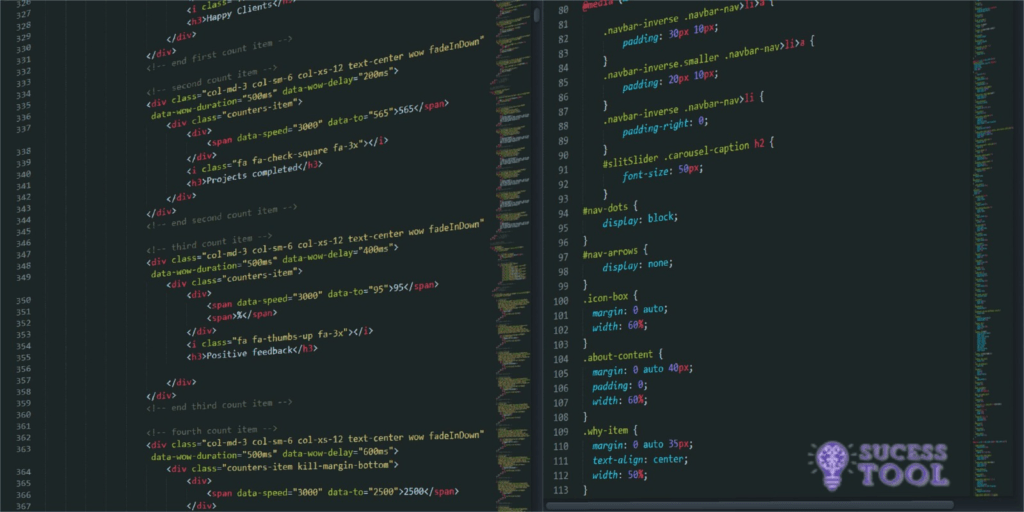Which is More Useful for Web Developers: Frontend Vs. Backend?

Frontend and backend development are the two components of web development. Even though these two elements are sometimes characterized as distinct fields of knowledge. Each is essential to the growth of smooth, useful, and captivating web applications. However, prospective developers frequently question whether frontend or backend programming is a more beneficial or fulfilling professional path. The response is complex because web development benefits from the unique but complementary contributions of both frontend and backend roles.
What are the developments of the front end?
The elements of a website or application that users directly interact with are the subject of front-end development. Sometimes referred to as client-side development. It is in charge of the overall layout, buttons, text and images as well as the website’s appearance, feel and interactivity.
Essential Competencies in Front-end Development
- Fundamental Technologies: The fundamental technologies of front- end developers are HTML, CSS, and JavaScript. JavaScript gives interactivity to web pages, CSS manages style and HTML supplies the
- Frontend Frameworks and Libraries: React, Angular, and Vue.js are a few examples of frameworks that simplify and organize front-end development, which makes it simpler to create responsive apps.
- Responsive Design: Frontend developers make sure websites are responsive, meaning they work well on PC’s, tablets and smartphones.
Features of Focusing in Frontend Development
Direct Effect on User Experience: Front-end developers are in charge of making an experience that is easy to use and entertaining, which makes this position perfect for people who enjoy designing visual components and analyzing user behavior.
Rapid Visual Feedback: Developers may see the outcomes of their work in real-time, enabling faster iteration. Because frontend changes are visually apparent without delay.
There is a growing need for mobile-friendly and interactive applications, and businesses are looking for front-end developers who can create apps that are responsive and look fantastic on all screens.
What is the development of Backends?
The server, database and application logic that underpins the front end are all part of backend development, often known as server-side development. Although users cannot see this portion of the program. It powers crucial features like data management and storage, transaction processing and making sure that data is securely and effectively transmitted to and from the front-end.
Essential Competencies in Backend Development
- Server-Side Programming Languages: Python, Java, Ruby, PHP, and JavaScript(Node.js) are among the languages developers frequently use.
- Database Management: To safely store and manage data, backend engineers employ databases such as MySQL, PostgreSQL and MongoDB.
- APIs and Integrations: Backend engineers can facilitate smooth communication between various applications and between the front-end and backend by having an understanding of RESTful APIs and
Benefits of Focusing on Backend Development:
- Logical Problem-Solving: Backend development is a great option for people who like to think critically and solve problems because it entails sophisticated data processing, algorithms and logic.
- Emphasis on Data and Security: Backend developers deal with private information and security measures, needed in sectors like e- commerce, healthcare and finance.
- Growing Need for API Development and Integration: Backend developers with expertise in API development and integration are becoming more and more necessary as web services grow more
The Frontend or the Backend: Which Is Better?
Development of both frontend and backend is necessary to create practical and user-friendly web applications. The usefulness of each path, however, usually changes based on interests, desired work conditions, and career goals. Let’s look at some specific scenarios:
- It Could Be More Beneficial to Develop Frontend If: The user experience is directly shaped by front-end developers . So you are interested in design and user experience. Design, color theory, layout, and making user-friendly interfaces are all things that frontend development is likely to be more rewarding for you.
- You Like Visual, Instant Feedback: Individuals who like experimenting with visual aspects and seeing the outcomes of their work right away will find frontend development’s ability to observe changes instantaneously rewarding.
- You want to get more involved with UI/UX: Many front-end developers acquire useful abilities.
Benefits of Full-Stack Development:
- Versatile Skill Set: Full-stack developers are very flexible and useful in a range of project contexts because they are knowledgeable about both frontend and backend technologies.
Increased Prospects for New and Small Enterprises: Full-stack engineers are frequently preferred by smaller businesses since they can perform a variety of tasks and are therefore more affordable.
- Enhanced Collaboration: Full-stack engineers may collaborate more effectively with both teams by having a solid understanding of both frontend and backend, which boosts output and communication.
However, because new frameworks, languages, and best practices are always emerging. It can be difficult to stay up to date with the large range of tools and technologies required for full-stack development.
Conclusion: What pathway will you take to get there?
It ultimately boils down to individual interests and professional objectives whether to pursue frontend and backend development, or both as a full-stack developer. For those who enjoy design, user experience, and visually appealing projects, front-end development may be the ideal career path. However, if you like dealing with data, solving logical problems, and creating safe, useful systems, backend development might be a better fit. Although it gives flexibility, full-stack development necessitates a dedication to learning a large range of skills.
For the current web, both frontend and backend development are essential, yet neither is more useful than the other. Because of their distinct contributions, each field is required to create web applications of the highest caliber
© 2024 @ Jai Japnaam Technologies Private Limited.

One Response
It is very useful information for me.